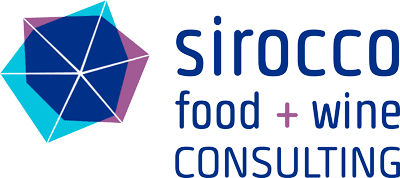On September 25, 2020, the Codex Alimentarius Commission adopted the revised Code of Practice (General Principles of Food Hygiene [CXC 1-1969] and its HACCP annex). The Codex Alimentarius regroups internationally recognized standards, codes of practice, recommendations, and guidelines published by the Food and Agriculture Organization (FAO) and World Health Organization (WHO). Generally referred to as “Codex HACCP” the General Principles of Food Hygiene and its HACCP annex were first introduced in 1969 and revised in 1997, 2003, and 2020. The guidelines address food safety, production, and labeling and expand the “WHO 5 Keys to Safer Food” concept of “keep clean, separate raw and cooked, cook thoroughly, keep food at safe temperatures and use safe water and raw materials.” SQF teams write Codex HACCP plans to certify to SQF. Key changes in the 2020 Codex HACCP version are presented below.
Objectives
The document articulates how Good Hygiene Practices (GHPs) — defined as “fundamental measures and conditions applied at any step within the food chain to provide safe and suitable food” — applied in combination with Hazard Analysis and Critical Control Point (HACCP), provide a framework for safe food production at all points of the supply chain. This updated version of the standard stresses that Ready-To-Eat (RTE) Foods may require a greater level of care compared to foods that will be further processed. It considers temporary and mobile food establishments and vending machines as new environments subject to food safety procedures.
The Codex HACCP emphasizes the importance of management, commitment, and traceability, specifically ensuring that a strong food safety culture and the ability to recall food promptly helps in protecting the consumer. The risk-based systematic methodology follows 12 HACCP plan steps: 5 preliminary steps followed by 7 principles. A strong focus is placed on the validation of critical limits for each CCP as well as on the validation of the HACCP plan as a whole. Your business must provide resources to the 2 SQF practitioners to develop, write Codex HACCP plans to certify to SQF annually. Educating the team on the 7 HACCP principles is a key requirement of SQF.
Overview of Key Changes:
- Definitions
- Focus on Allergen controls
- Importance of GHPs in relation to HACCP
- Codex Decision Tree
- Training and Competence
- Food Safety Culture
- Lot Identification and Traceability
Definitions
The definitions section on page 5 of the Codex HACCP 2020 (35 pages long) provides a better understanding of commonly used terminology and acronyms. For instance, “allergen cross-contact” is defined as the “unintentional incorporation of an allergenic food or ingredient into another food that is not intended to contain that allergenic food or ingredient.” This terminology is also used in the FDA Food Safety Modernization Act (FSMA) and modernized Current Good Manufacturing Practices (CGMPs) regulations. A definition of “Prerequisite Programme” has also been added: “Programmes including Good Hygiene Practices and Good Manufacturing practices, as well as other practices and procedures such as training and traceability, that establish the basic environmental and operating conditions that set the foundation for implementation of a HACCP system.” Also worthy of mention is the definition of “validation” which has been removed and replaced with “validation of control measures.” It is defined as “obtaining evidence that a control measure or combination of control measures if properly implemented, is capable of controlling the hazard to a specified outcome.”
Focus on Allergen Control
The section on Allergen Management references CXC 80-2020, the Code of Practice on Food Allergen Management for Food Business Operators. A system of allergen management must be in place from receiving to shipping to address intentionally-added allergens to food. Prevention of allergen cross-contact is also clearly defined as well as the need to inform consumers by implementing proper food labeling procedures. In addition, allergen awareness training must be provided in businesses where allergen risks are considered high.
Importance of GHPs in Relation to HACCP
The Codex Alimentarius Commission recognizes that the application of GHP procedures and CCP procedures are equally important in the production of safe food. The hazard analysis must consider the likelihood of occurrence of food safety hazards, taking into consideration Prerequisite Programs. Hazards are identified based on “the likelihood and severity of adverse health effects associated with the hazards in the food in the absence of control.” Hazards that are rated as “significant” are controlled by “measures designed to prevent or eliminate these hazards or reduce them to an acceptable level.” In some cases, this may be achieved with the application of GHPs. […] In other instances, control measures will need to be applied within the process, e.g. at critical control points.”
Codex Decision Tree
The Critical Control Point (CCP) decision tree provided in the 2003 publication has been removed, but the document still references using this tool while determining CCPs. HACCP teams may therefore decide to use the CCP decision tree or an “other approach” such as seeking “expert consultation.”
Training and Competence
Section 4 of the document – “Training and Competence” – is more substantial and covers awareness and responsibilities, training programs, instruction and supervision, and refresher training. We will note the need for employees of “retail and food service operations” to convey “certain information about the food (ex: allergens) to consumers.” The training should be provided to “food handlers and personnel associated with the food business such as maintenance staff.”
Food Safety Culture
This new addition to the Codex HACCP document borrows from GFSI (Global Food Safety Initiative) benchmarking requirements. Companies are expected “to build a positive food safety culture by demonstrating their commitment to providing safe and suitable food and encouraging appropriate food safety practices.” A positive food safety culture is “fundamental to the successful functioning of any food hygiene system” and must take into consideration “human behaviour in providing safe and suitable food.”
Lot Identification and Traceability
This new requirement in the Codex HACCP 2020 stipulates that lot identification is essential to product recall and to help with stock rotation. Containers of food should be marked with a lot number and producer information. A tracing system must be designed to enable the recall of products when failures of the food hygiene system occur. Deviations to CCP and GHP procedures must be considered as to their impact on public health. “Periodic field trials” (understand mock recalls and trace exercises) must be part of the implementation of recall procedures. Root cause analysis and corrective actions taken must be documented.
Conclusions
The new modernized version of the Codex HACCP requirements (2020) is aligned with FSMA (Preventive control for human food rule), FDA HACCP standards, and GFSI in its recognition of the food safety culture and management commitment in producing safe food. It recognizes the importance of CCPs, Prerequisite Programs, and Good Hygiene Practices (GHPs) in the effectiveness of HACCP-based food safety systems. This concept is similar to the notion of “Preventive Controls” in food safety regulations such as FSMA and the Safe Food for Canadians Regulations (SFCR). It stresses the need to validate control measures and the food safety plan following the application of scientific principles and collecting data. It also places importance on supply chain risks and the need to implement product traceability procedures. SQF practitioners are required to write Codex HACCP plans to certify to SQF annually. They also may require to adapt their HACCP plan to meet PCHF requirements under FDA-FSMA. Understanding the key concepts of HACCP analysis under Codex will guarantee a positive SQF certification audit outcome.
References
Codex Alimentarius International Food Standards.
Need to write HACCP plans to meet SQF or FSMA HACCP Plan requirements? Contact Sirocco to discuss your food safety plan needs and food safety implementation with our GFSI and HACCP consultants.
Need Codex HACCP Training? We offer accredited HACCP courses to help your team achieve SQF practitioner credentials.





